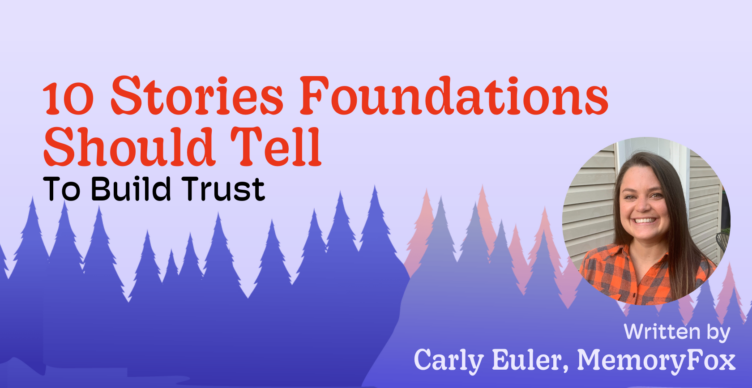Storytelling Strategy
SEO for Nonprofits: A Simple Guide to Ranking Higher
Why SEO Matters for Nonprofits
Search engine optimization (SEO) may sound technical, but it’s simply the practice of making your website more visible on search engines like Google. For nonprofits, this means more potential donors, volunteers, and supporters finding your mission online. With a few simple changes, your nonprofit can improve its search rankings – no SEO expertise required!
Nonprofits often focus on social media and direct outreach, but organic search traffic is a powerful (and often underutilized) tool for long-term growth. By optimizing your content for search engines, you can ensure that people looking for causes like yours find you first.
The good news? You don’t need to be an SEO master to improve your rankings! Small, strategic tweaks to your website’s content can make a big difference. Below is a checklist to help you optimize your blog posts and website pages after you’ve chosen the perfect keyphrase to target.
Choosing the Right Keyphrase
A keyphrase (or keyword) is the specific word or phrase that you want your content to rank for in search engine results. Choosing the right keyphrase is essential because it helps Google understand what your page is about and ensures that the right audience finds your content.
How to Choose a Keyphrase:
- Think like your audience: What words would someone search to find your nonprofit? Consider common phrases your supporters or donors might use.
- Use keyword research tools: Free tools like Google Keyword Planner, Ubersuggest, or AnswerThePublic can help identify search terms with good traffic.
- Check the competition: Look up potential keywords and see what ranks on the first page of Google. Aim for terms with a balance of search volume and lower competition.
- Be specific: Instead of broad terms like “donations,” try long-tail keyphrases like “how to donate to food banks in Chicago.”
- Align with your nonprofit’s goals: Choose a keyphrase that naturally fits your mission and the content you’re creating.
SEO for Nonprofits Checklist
Once you’ve determined your keyphrase, it’s time to write your article. Here is a checklist of small tweaks that will make a BIG impact on how search engines view and rank your article. It’s important to remember that you don’t need to do all of the things on this checklist, but each step increases your chances of ranking higher!
- Title: Keep titles 60 characters or less and include the keyphrase.
- Text length: Aim for 800-1000 words, as this tends to perform best for rankings.
- Use keyphrase in introduction: Mention your keyphrase naturally in the opening paragraph.
- Use keyphrase in subheadings: Organize content with headings that naturally include your keyphrase.
- Include outbound links: Link to relevant studies, statistics, or authoritative sources from other websites to boost credibility.
- Include internal links: Link to related pages on your nonprofit’s website.
- Include images: Visuals improve engagement. Use Canva to create your own or use existing assets.
- Use keyphrase in image descriptions: Alt text and captions should include the keyphrase when relevant.
- Keyphrase density: Use the exact keyphrase 2-3 times throughout the article, keeping it natural.
- Meta description: Write a compelling 150-character description that includes your keyphrase. This description will show up as the ”preview” in the search engine!
- Use keyphrase in slug (URL handle): For example, if your keyphrase is “SEO tips for nonprofits”, consider making your page URL: yournonprofit.org/seo-tips-for-nonprofits.
Where Does Nonprofit Storytelling Fit In?
SEO isn’t just about keywords – it’s also about engaging content that resonates with readers. Nonprofit storytelling is a powerful way to connect emotionally with your audience while also improving your search rankings.
How to Incorporate Storytelling into Your SEO Strategy:
- Use real stories to support your keyphrase: If your keyphrase is “how food banks help families,” include a real-life example of someone who benefited from your services.
- Make your content engaging and shareable: Search engines prioritize content that keeps readers engaged. A compelling story can increase time on page and encourage social sharing.
- Include multimedia elements: Videos, images, and infographics that tell a story can improve engagement and boost SEO.
- Optimize storyteller testimonials: If you include a quote or testimonial, make sure to add the keyphrase naturally within the text.
- Leverage blog posts to tell impact stories: Create blog content that highlights success stories and ties them to the topics your audience is searching for.
By combining SEO best practices with strong storytelling, your nonprofit can reach more people while staying true to its mission. Following these simple steps will increase your nonprofits chances of ranking higher on search engines, reaching more people who care about your cause. Start small, make incremental changes, and over time, you’ll see the impact of SEO on your website’s visibility.

About the Author
Carly Euler
Marketing Director, MemoryFox
Carly comes from the nonprofit world ready to elevate the hundreds of nonprofits in the MemoryFox community. She currently serves as the Co-Chair of the Wily Network’s Young Professionals Association, and has previously held positions at the Breast Cancer Coalition of Rochester, the Code of Support Foundation, Kenya Lacrosse Association, and the BOMA Project, where she has specialized in marketing, communications, and fundraising. Storytelling has been an integral part of each role.




